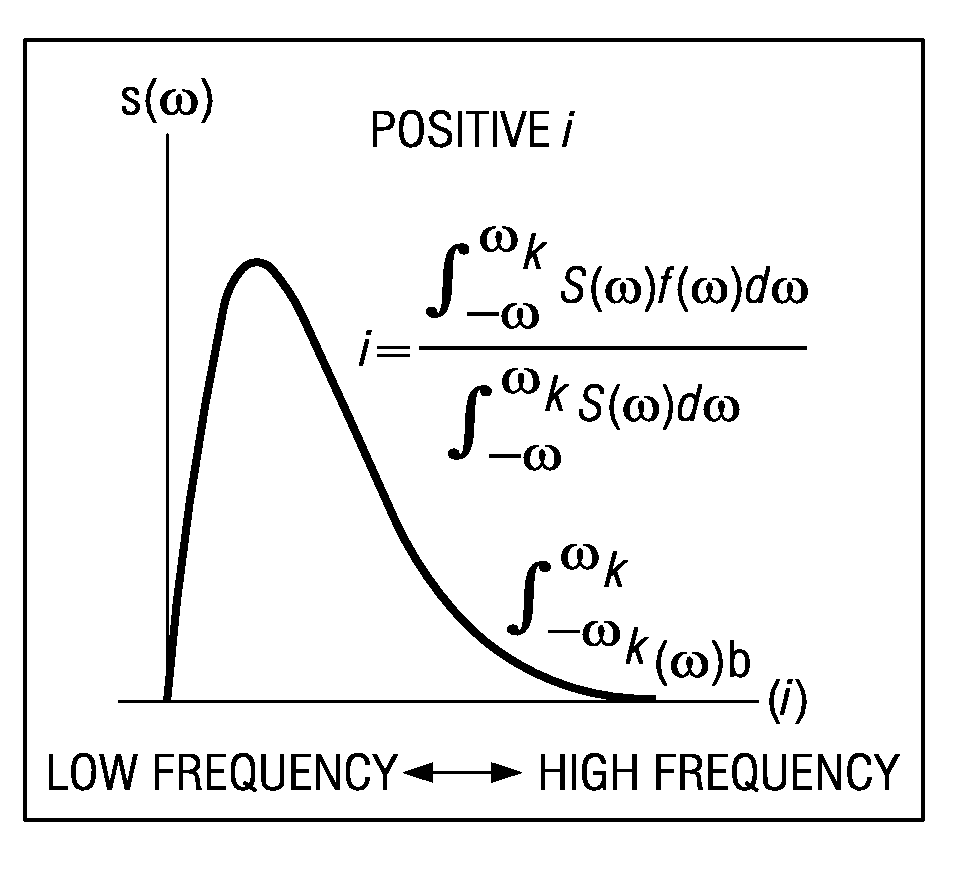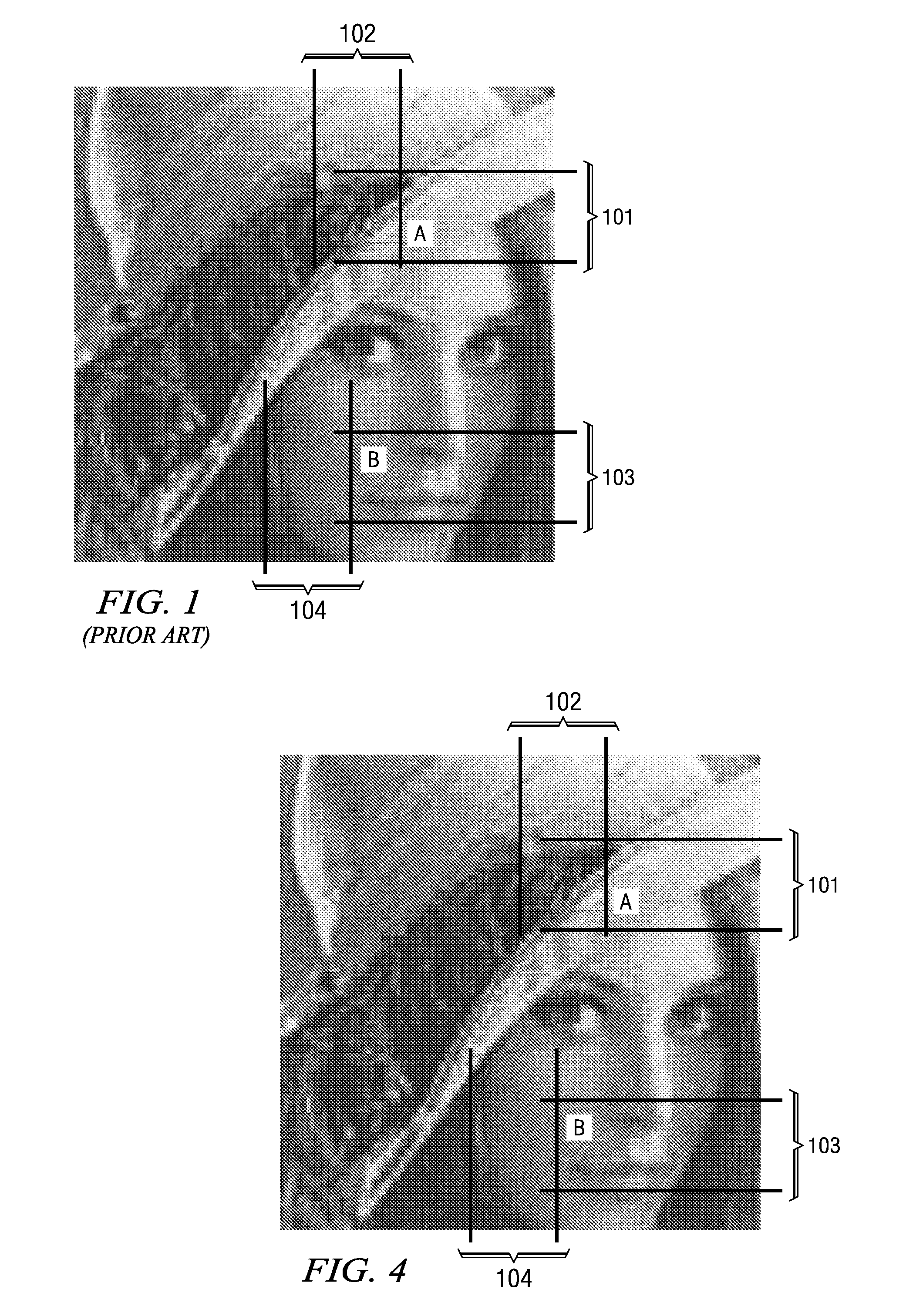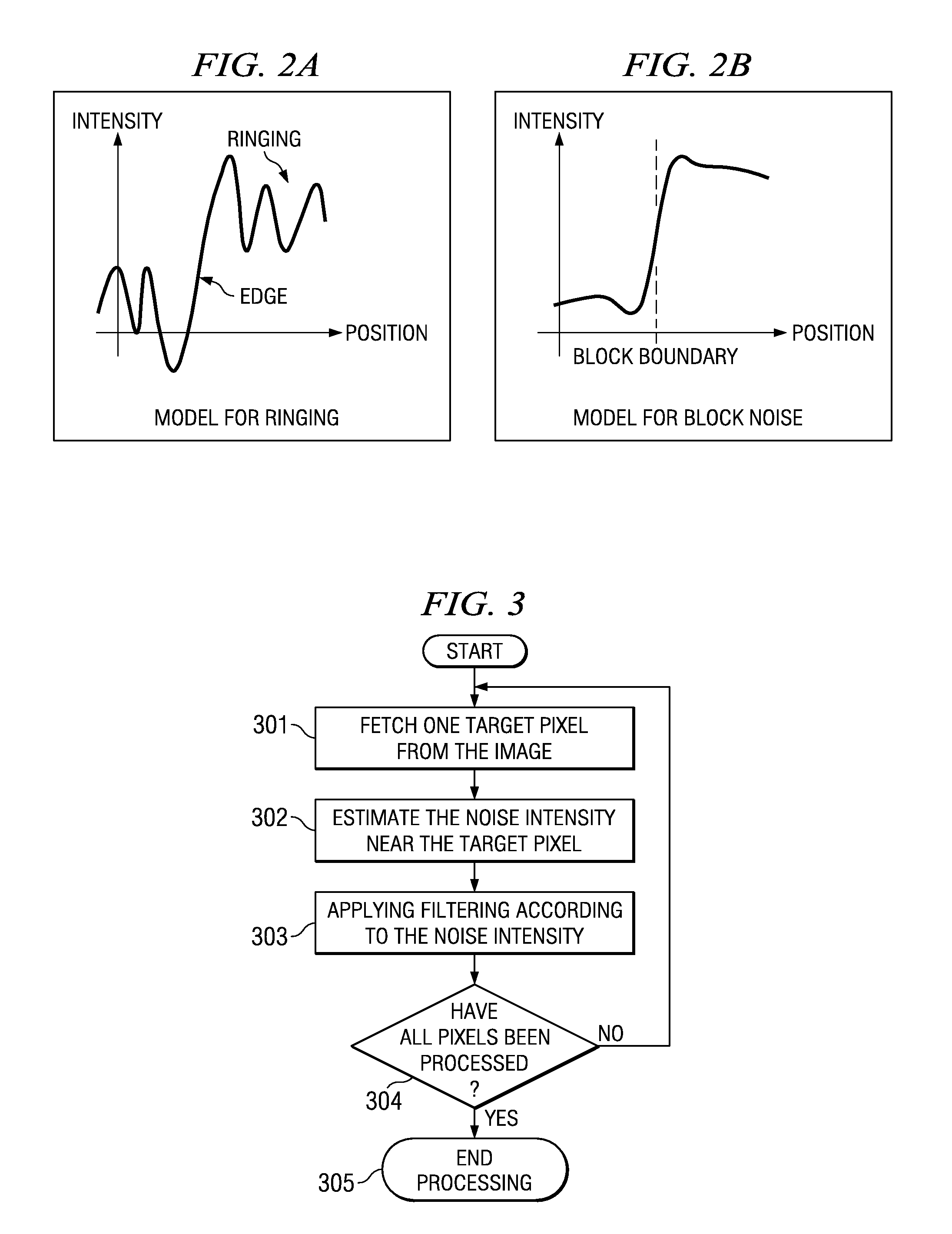Post-processing technique for noise reduction of DCT-based compressed images
a post-processing and compressed image technology, applied in the field of video image decoding, can solve the problems of removing image detail, reducing image quality and reducing noise artifacts
- Summary
- Abstract
- Description
- Claims
- Application Information
AI Technical Summary
Benefits of technology
Problems solved by technology
Method used
Image
Examples
Embodiment Construction
[0023]The present invention describes a new method for post-processing to remove unwanted noise from DCT-based images utilizing new models for ringing effects and block noise. The invention develops new models for these effects that are described by a special new processor function derived from the autocorrelation process.
[0024]This invention for removal of unwanted noise artifacts from the image signal has the following advantages. First, computational complexity is small compared to conventional filters. The filtering method for each filter is simple compared to other filters such as wavelet filter, despite the high quality of the output images. Second, the invention both detects and removes noise in the image. Image details are preserved and the resulting output is high in quality. The process is applicable to various DCT-based compression techniques such as JPEG and MPEG. The process itself is entirely independent of decoding process, thus, allowing flexibility in designing of t...
PUM
 Login to View More
Login to View More Abstract
Description
Claims
Application Information
 Login to View More
Login to View More - R&D
- Intellectual Property
- Life Sciences
- Materials
- Tech Scout
- Unparalleled Data Quality
- Higher Quality Content
- 60% Fewer Hallucinations
Browse by: Latest US Patents, China's latest patents, Technical Efficacy Thesaurus, Application Domain, Technology Topic, Popular Technical Reports.
© 2025 PatSnap. All rights reserved.Legal|Privacy policy|Modern Slavery Act Transparency Statement|Sitemap|About US| Contact US: help@patsnap.com



